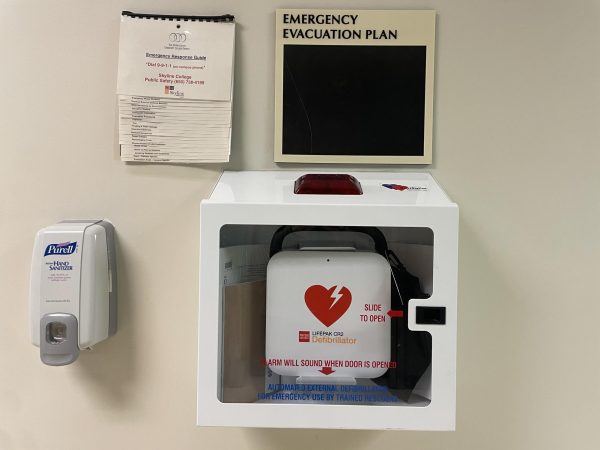Failure of leadership in the age of climate change
Considered the worst back-to-back storms in modern American history by climatologists, Hurricanes Harvey and Irma were estimated by Moody’s Analytics to reach a staggering cost of between $150 and $200 billion. The human costs, including loss of lives and homes, are immeasurable. This necessitates the question: Could our nation’s leaders and policy makers have anticipated these devastating events and put measures in place to better prepare and protect these communities?
Incredibly, just two days after Irma, two more extreme cyclones, Hurricanes Jose and Maria, arrived in rapid succession. Jose had wind speeds exceeding 150 mph and could have wiped out entire cities had its path veered in a different direction. The C5 Hurricane, Maria had wind speeds upward of 175 mph and left a trail of apocalyptic destruction, including severe flooding, an island-wide communications blackout, and at least 53 deaths in several Caribbean countries. Puerto Rico was left entirely without electricity, its power grid having been totally destroyed.
What caused the onslaught of these four devastating storms in quick succession? Could our nation’s leaders in government have anticipated these devastating events and placed measures to better prepare and protect the affected communities?
Hurricanes are natural phenomena, the results of massive amounts of water evaporating and twisting high in the atmosphere. However, higher ocean temperatures, due to global warming, cause these storms to be more frequent, larger, and more destructive (increased water temperatures cause increased evaporation and amounts of moisture in the air). Studies have shown that areas intensely affected by Harvey had surface sea temperatures up to an entire degree Celsius higher than normal. Over the past weeks, a great many credible sources have published articles identifying warm seawater as the cause for the deadliness of Harvey. According to Research Meteorologist Martin Hoerling of the National Oceanic and Atmospheric Administration (NOAA) via NPR, “At the time Harvey intensified into a Category 4 hurricane, it was over a section of the Gulf that was about four degrees above normal.” For decades, virtually all credible scientific groups including NASA have been issuing stern warnings about the worsening threats of natural disasters caused by unprecedented rising sea levels. Global warming-induced extreme weather is here to stay and it is only going to get worse. How do we deal with this reality?
Unfortunately, the people currently holding power in Washington and in many state capitals are climate change deniers who ignore the overwhelming scientific evidence and twist facts in order to push their industry-friendly agendas. This prevents appropriate measures from being put in place to deal with these enormous storms and protect our cities. It also leads to public misinformation, preventing communities from being able to prepare for such disasters. In the case of Harvey, coastal areas around the eastern Pacific predicted Hurricane Harvey’s arrival, yet the vast majority of the public was blindsided by the severity. Even President Trump tweeted his surprise and amazement two days after its inception, showing the scale of people who were uninformed of the magnitude of destruction to come. This would not have come as a shock to the President if he was more objective in heeding the immense amount of scientific evidence regarding climate change.
What are the challenges? The first big obstacle stems from the aforementioned climate change deniers. These are the people who side with polluting industries, such as the oil and gas companies, who are intent on reducing regulations to lower costs and increase profits. Their refusal to acknowledge climate change leads to the regrettable loss of the opportunity to join the world community in combating global warming. As 195 countries banded together in historic solidarity to take modest steps to slow down global warming in the Paris Climate Accord, President Trump demonstrated his regressive stance in pulling the U.S. out of the agreement. This amounts to an unfathomable disregard for our planet’s health. The administration’s refusal to admit that global warming contributes to natural disasters is the biggest impediment to our ability to tackle the problem head on.
Worse yet, the current administration is taking huge steps backward by reversing the hard work of the previous administration and citizen activists in the community to prepare for catastrophic disasters such as Harvey. While Tweeting, “doing a great job,” and taking credit for the response of the Federal Emergency Management Agency or FEMA, Trump was proposing debilitating cuts of $667 million to FEMA and other related programs. Many of these were set in place by the Obama administration after learning from the Bush administration’s poor response to Hurricane Katrina in 2005, which killed 1,800 people. The Washington Post states that additional cuts included “those to the Department of Housing and Urban Development which helps rebuild homes, parks, hospitals, and community centers; the National Weather Service, which forecasts extreme storms; and the National Oceanic and Atmospheric Administration, whose research and community engagement help coastal residents prepare for disaster.” NOAA’s budget alone would be cut by $200. These are the very programs that need to be strengthened and not slashed. “The president has definitely sent a signal with his budget that emergency management is not of interest,” said Scott Knowles, a historian at Drexel University who studies risk and disaster.
In addition to cutting programs that would help predict future disasters and deal with their destructions, the government is already dismantling at an alarming rate infrastructures put in place that would prevent damage and save costs that could be as high as hundreds of billions of dollars for tax payers. The Washington Post reported that “Trump officials recently struck down an Obama administration rule requiring building projects in line for federal funding to strongly consider climate change risks — for example, by elevating structures in flood zones away from the reach of rising water.”
Elected officials have the duty to put the public welfare first. Protecting the safety of our communities by heeding the scientific facts and recognizing the threats is the minimum we must expect of our government leaders. Lawmakers need to take serious action with solid, long-term plans and not yield to the agenda pushed by industrial lobbying groups. It is high time we demand our politicians to prioritize protecting our cities from the effects of climate change. Taking steps to slow global warming instead of denying it would be a good start, and, as the recent destructions show, it would not be a moment too soon.












